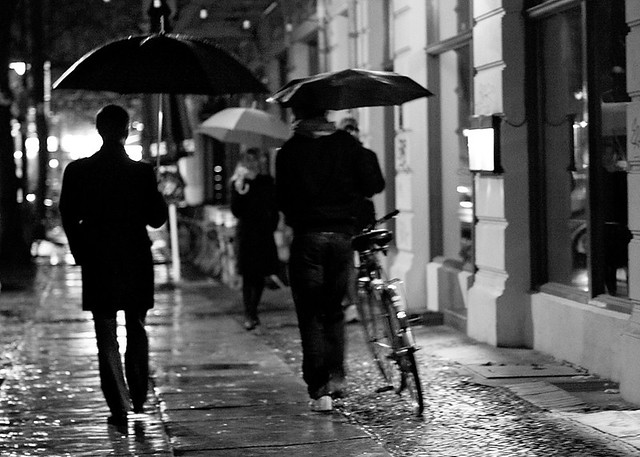This week we're talking about aperture. For me, aperture is where the real fun of photography is, but it's also the most counter-intuitive. Aperture does two things - it is another way of controlling how much light your camera receives and it also controls your depth of field. Depth of field is a fancy way of describing how much of your photo is in focus. These two aspects interact, but I'm going to explain them separately as this makes the most sense to me.
Aperture as a control mechanism for light.
Loosely defined aperture is how wide your camera's shutter opens when it takes a photo. This is different to shutter speed. Shutter speed is how quickly your shutter opens. I'm a visual learner and I find that the easiest way to explain this is via a "clapping" demonstration.
1. Bring your palms together in a prayer or clapping position. Now, slowly move your hands out until they are about 30cm apart and then bring them back together.2. Repeat this process, but this time do the movement quickly.
3. The difference between step 1 and 2 is shutter speed.
4. Repeat step 1 (seriously)
5. Now, repeat this process at the same speed, but this time only separate your hands by 10cm
6. The difference between 4 and 6 is aperture.
7. Repeat, draw a diagram, say it aloud. Learn the difference. It's important.
Aperture is measured in f-stops with the narrowest being around f/22 and the widest f/1.2.
Looking at the diagram above it is easy to imagine which lets in the most light. F-stop numbers such as f/16 and f/11 let in a smaller amount of light compared with f/4 and f/2.8. Notice how I've resisted using the terms "bigger" and "smaller" - that's because when we talk about aperture, the bigger apertures are f/2.8, f/1.4 and the smaller apertures are f/16 and f/11.
Aperture as a mechanism for controlling light matters (again) in poorly lit situations. As well as raising the ISO to increase the amount of light reaching the camera (see ISO post here), we can also increase the aperture. A wider aperture such as f/2.8 will let in more light which will allow us to have a quicker shutter speed. If you're confused about this, do the clapping demonstration again and imagine the amount of light entering through your hands while they are separated.
In these three photographs I set my camera to Aperture Priority and the only thing that I changed was the aperture. In order to correctly expose the photograph the camera had to have a faster shutter speed to compensate for the wider aperture setting. (Note: Lenses with wide aperture are often called quick for this reason). The only other difference between the first photo and the two below is that I edited it slightly to increase the colour saturation of the foreground flower to make it stand out a bit more.
Next week: Aperture as a mechanism for controlling depth of field






12 comments:
love your photo know-how :)
I personally only use the aperture setting for controlling the depth of field, however I do it much less then I should...
Viele Gruesse, Kristina
Aperture intimidates me, I tend to use the speed setting in manual most!
here I am clapping my hands! great post, I am very boring and never go about about f10.
Thans for that. I really want to try this out:)
Kisses and wish you a great Monday
Uf, this I think I'll have to do more than ones, to learn. Thanks for sharing your knowlage.
Have a creativ week.
These posts are so helpful to me! I swear, I want to print them out and carry them around in my camera bag (well, when I get a fancy camera that is...). Your clapping example really brought aperture into focus (ba du bump) for me.
AForeignLand.blogspot.com
Another helpful post! Thanks for writing this!
great tutorial. so helpful. example is great.
Thank you so much for writing this....
I just found your blog... love it I am now a follower.
xxx
CEO
http://www.ceocooleclecticoriginal.com/
Why does it sounds so simply when you explain it, but when I get behind the camera all understanding just disappears?
clapping away right now....
you're the bestest, you explain it really succinctly.
Great explanation! I used to know these things - back when there was no digital and I had a slr. Unfortunately, I've forgotten. I especially like the visual part as I am a visual learner as well. Thank you. Now if I could just tackle iso.
Post a Comment